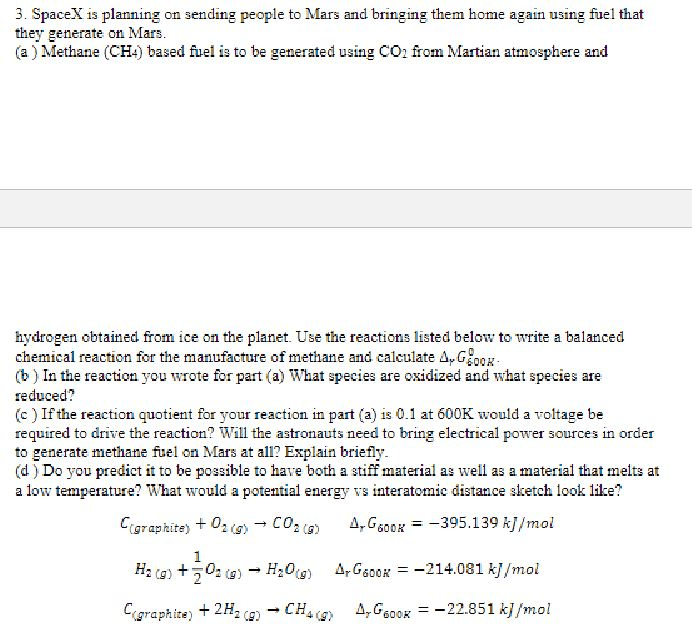Hydrogen gas has the potential for use as a clean fuel in reaction with oxygen. The relevant reaction is
2 H2(g) + O2(g)  2 H2O(l)
2 H2O(l)
Consider two possible ways of utilizing this reaction as an electrical energy source: (i) Hydrogen and oxygen gases are combusted and used to drive a generator, much as coal is currently used in the electric power industry; (ii) hydrogen and oxygen gases are used to generate electricity directly by using fuel cells that operate at 85 °C. (a) Use data in Appendix C to calculate ∆H° and ∆S° for the reaction. We will assume that these values do not change appreciably with temperature. (b) Based on the values from part (a), what trend would you expect for the magnitude of ∆G for the reaction as the temperature increases? (c)What is the significance of the change in the magnitude of ∆G with temperature with respect to the utility of hydrogen as a fuel? (d) Based on the analysis here, would it be more efficient to use the combustion method or the fuel-cell method to generate electrical energy from hydrogen?
Hydrogen gas has the potential for use as a clean fuel in reaction with oxygen. The relevant reaction is
2 H2(g) + O2(g) 2 H2O(l)
Consider two possible ways of utilizing this reaction as an electrical energy source: (i) Hydrogen and oxygen gases are combusted and used to drive a generator, much as coal is currently used in the electric power industry; (ii) hydrogen and oxygen gases are used to generate electricity directly by using fuel cells that operate at 85 °C. (a) Use data in Appendix C to calculate ∆H° and ∆S° for the reaction. We will assume that these values do not change appreciably with temperature. (b) Based on the values from part (a), what trend would you expect for the magnitude of ∆G for the reaction as the temperature increases? (c)What is the significance of the change in the magnitude of ∆G with temperature with respect to the utility of hydrogen as a fuel? (d) Based on the analysis here, would it be more efficient to use the combustion method or the fuel-cell method to generate electrical energy from hydrogen?

